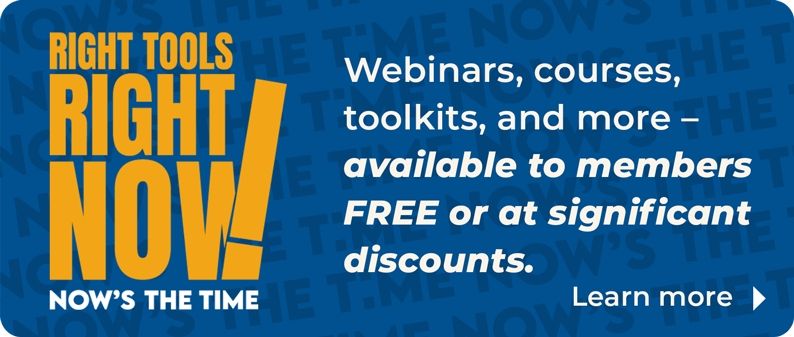References
NAR Library & Archives has already done the research for you. References (formerly Field Guides) offer links to articles, eBooks, websites, statistics, and more to provide a comprehensive overview of perspectives. EBSCO articles (E) are available only to NAR members and require a password.
Zoning Basics
What is Zoning and Why Do We Need It? (Colorado Springs Gazette, Nov. 25, 2021)
“Zoning refers to municipal or local laws or regulations that govern how real property can and cannot be used in certain geographic areas. For example, zoning laws can limit commercial or industrial use of land in order to prevent oil, manufacturing, or other types of businesses from building in residential neighborhoods.”
Zoning and Your Business Location (The Balance, Oct. 12, 2022)
“Every local business needs to consider zoning. Whether you are setting up your business in your home, buying or building a new office or warehouse facility, zoning comes into play as a big factor…As you look for business locations, keep in mind the different types of zoning you may encounter. Knowing how a property is zoned can help you avoid problems and give you information to help you seek changes.”
CityLab University: Zoning Codes (CityLab, Aug. 6, 2019)
“Although invisible on land and inscrutable on paper, municipal zoning codes have a tremendous impact on the form of cities—and by extension, on the way people live in them. Today, these arcane regulations are seeing unprecedented levels of public scrutiny. After decades of embracing strict zoning rules, several cities and states want to relax them to make it easier to build housing and create more environmentally friendly communities. This edition of CityLab University offers an overview of zoning and defines the key terms related to it in America, so you can better understand the rules that are shaping your city and neighborhood.”
Zoning Board Basics (University of Wisconsin Land Use Training & Resources, 2019)
“Every community that has adopted a zoning ordinance must appoint a zoning board of adjustment or appeals. The zoning board of adjustment or appeals functions like a court, and must follow state laws and local zoning ordinances. The zoning board cannot change or ignore any part of the zoning ordinance or state laws, but must apply the laws as written. Zoning boards do not get to change local zoning laws. If a person wants to change the zoning laws they should run for office to be on their county, city, village or town board, which are the bodies that decide on the content of the local zoning laws.”
Impacts of Zoning
Exclusionary Zoning: Origins, Open Suburbs, and Contemporary Debates (Journal of the American Planning Association, 2021) E
“Exclusionary zoning refers to local land use zoning practices that effectively bar low- and moderate- income households from finding adequate housing. Exclusionary zoning does not look the same from place to place, nor is exclusionary zoning the only impediment to meeting housing needs. Its removal is a necessary, though insufficient, condition for providing adequate housing. It is arguably a bigger problem today than ever, with the United States producing less and less housing even as prices escalate.” The author provides a look into zoning practices of the 20th century and how those have shaped American cities and local markets.
Inclusionary Zoning and Housing Market Outcomes (Cityscape: A Journal of Policy Development and Research, 2021)
“As regions across the United States experience high and rising house prices, inclusionary zoning has become more popular as a tool to increase the availability of affordable housing for households making less than their region's median income. When inclusionary zoning requires private developers to subsidize below-market-rate units, however, it may act as a tax on housing, leading to reduced supply and higher prices than cities would experience without the policy. In this article, the author uses a new dataset on inclusionary zoning in the Baltimore-Washington region to estimate its effects on market-rate house prices and building permits in a difference-in-difference study. The author finds some evidence that inclusionary zoning increases market-rate house prices but none that it reduces new housing supply.”
Exclusionary Zoning: Its Effect on Racial Discrimination in the Housing Market (US White House, Jun. 17, 2021)
“One area that is particularly important for economic well-being and wealth accumulation is housing. Families who can purchase their own home in the neighborhood of their choice at a fair price and see the value of their home grow over time do better economically in the long run. But numerous policies have systemically discriminated against Black families who wish to pursue that path. This blog focuses on one of these policies: exclusionary zoning laws, which have played a role in causing racial disparities in the housing market.”
Is Zoning a Useful Tool or a Regulatory Barrier? (Brookings, Oct. 31, 2019)
“Local regulations over how land can be developed are under fire for their role in escalating housing costs. Research shows that overly restrictive zoning makes it hard for developers to build new housing, driving up rents and prices…In this article I describe how zoning laws regulate housing, discuss the strengths and limitions of different approaches to measuring zoning stringency, and outline an alternative framing of the problem.”
How Zoning Shapes Our Lives (Housing Matters, Jun. 12, 2019)
“Zoning rules dictate more than just how we can use and build on land. They also shape our communities and our lives. Land use laws determine where we can find housing, schools, and parks—and who has access to them. Policymakers initially created zoning codes to protect public health—for example, to stop residents from getting sick from living too close to factories. But from the start, zoning has separated more than just land uses. It has also separated people.”
Inclusionary Zoning (Bloomberg CityLab, Jul. 17, 2018)
“Inclusionary zoning (also sometimes called “inclusionary housing”), is an increasingly popular way to produce affordable housing through the private market. And while these programs only produce enough units for a lucky few low- and moderate-income households, they remain one of the main tools cities have for maintaining neighborhood diversity, and keeping high-opportunity areas affordable.”
Zoning Reform
Effective Zoning Reform Isn’t As Simple As It Seems (Bloomberg, May 24, 2022)
“Identifying the land-use policies that most effectively add housing is harder than it seems. Mounting evidence indicates that one-off reforms such as eliminating single-family-only zoning aren’t adequate. To make meaningful progress in building homes, municipalities have to do more…The requirements for zoning reforms must be tailored to different jurisdictions’ unique circumstances, because a one-size-fits-all strategy won’t be effective or equitable.”
Zoning Reform and Housing Opportunity (American Planning Association, 2022)
Learn more about how the American Planning Association is encouraging its members to participate in zoning reform effort in state and local zoning laws to increase housing supply, decrease housing costs, and break down exclusionary rules. This page includes resources for advocating for zoning reform, as well as opportunities for planners and real estate professionals interested in zoning reform.
Build Race Equity Into Rezoning Decisions (Brookings, Jul. 13, 2021)
“Housing discrimination on the basis of race has been outlawed for more than half a century, yet Americans still reside in neighborhoods significantly divided by race and, to a lesser extent, class. Although this state of affairs has multiple causes, one of the most important is land use regulations that are used by cities and towns to exclude certain types of people from neighborhoods and even entire towns. Zoning in particular is one such tool.”
State and Local Policy Strategies to Advance Housing Affordability (National Association of REALTORS®, Feb. 17, 2021)“The United States faces a severe and worsening housing affordability crisis that increasingly affects every state and almost every major community in the nation. The two most recent economic shocks, the Great Recession and the ongoing COVID-19 pandemic, profoundly exacerbated housing affordability across the country…This paper intends to shed light on the scope and scale of the problem in communities across the country and to highlight a selection of policy pathways that communities can and should consider pursuing in order to support local affordability.” Pages 24-27 highlight how zoning reforms can “potentially be used to bolster local economies and government revenues, while increasing the supply of housing without significant upfront budget outlays.”
A Fair Shake for Community Residences (Planning, Feb. 5, 2020) E
“This article discusses need for planning commissioners to revise zoning code to comply with the U.S.'s Fair Housing Act (FHA). It mentions that FHA requires cities and counties to make a reasonable accommodation in their zoning codes and other policies to allow community residences to be located in any residential district.”
Cities Start to Question an American Ideal: A House with a Yard on Every Lot (The New York Times, Jun. 18, 2019)
“Single-family zoning is practically gospel in America, embraced by homeowners and local governments to protect neighborhoods of tidy houses from denser development nearby. But a number of officials across the country are starting to make seemingly heretical moves… A reckoning with single-family zoning is necessary, they say, amid mounting crises over housing affordability, racial inequality and climate change. But take these laws away, many homeowners fear, and their property values and quality of life will suffer.”
Useful Websites
The Codes Project: An Anthology of Regulations That Have Shaped Urban Form
A searchable archive of zoning laws, land use development codes, building design codes, and other influential documents, ranging from 360 BC to modern times
“The Form-Based Codes Institute (FBCI), a program of Smart Growth America, is a professional organization dedicated to advancing the understanding and use of form-based codes.”
Smart Growth America is focused on “reinvesting in America’s downtowns and main streets…creating homes fro families of all income levels alongside one another in locations where daily needs are close by.” They take an interdisciplinary approach to creating solutions, proposing legislation, and specifically reforming zoning laws to allow for the encouragement of mixed building type and use neighborhoods.
eBooks & Other Resources
eBooks.realtor.org
The following eBooks and digital audiobooks are available to NAR members:
The Complete Real Estate Encyclopedia (eBook)
Community Planning: An Introduction to the Comprehensive Plan (Audiobook, eBook)
A Better Way to Zone: Ten Principles to Create More Livable Cities (Audiobook, eBook)
Missing Middle Housing (eBook)
Books, Videos, Research Reports & More
As a member benefit, the following resources and more are available for loan through the NAR Library. Items will be mailed directly to you or made available for pickup at the REALTOR® Building in Chicago.
Walkable City Rules (Island Press, 2018)
City Rules: How Regulations Affect Urban Form (Island Press, 2012)
City Economics (Harvard University Press, 2005)
Have an idea for a real estate topic? Send us your suggestions.
The inclusion of links on this page does not imply endorsement by the National Association of REALTORS®. NAR makes no representations about whether the content of any external sites which may be linked in this page complies with state or federal laws or regulations or with applicable NAR policies. These links are provided for your convenience only and you rely on them at your own risk.














